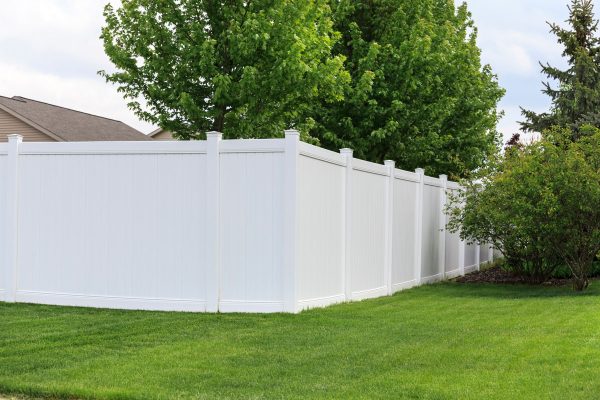A wide variety of fencing materials with different features are made available on today's market. Based on the purpose, strength, and durability and your preferred appearance of the enclosure, one final consideration remains, that of cost and expense. We have researched every aspect you need to know about fencing expenses.
Vinyl fencing materials are available in a wide range of structural components, specifications, and designs. The cost of vinyl fencing ranges from $15 to upwards of $50 per linear foot depending on quality and style. Vinyl tends to be more expensive than other materials such as wood, chain link, or aluminum.
To enable to determine if vinyl is the ideal material for your fencing needs, please read on, we aim to help your decision by providing comprehensive information on vinyl fencing.
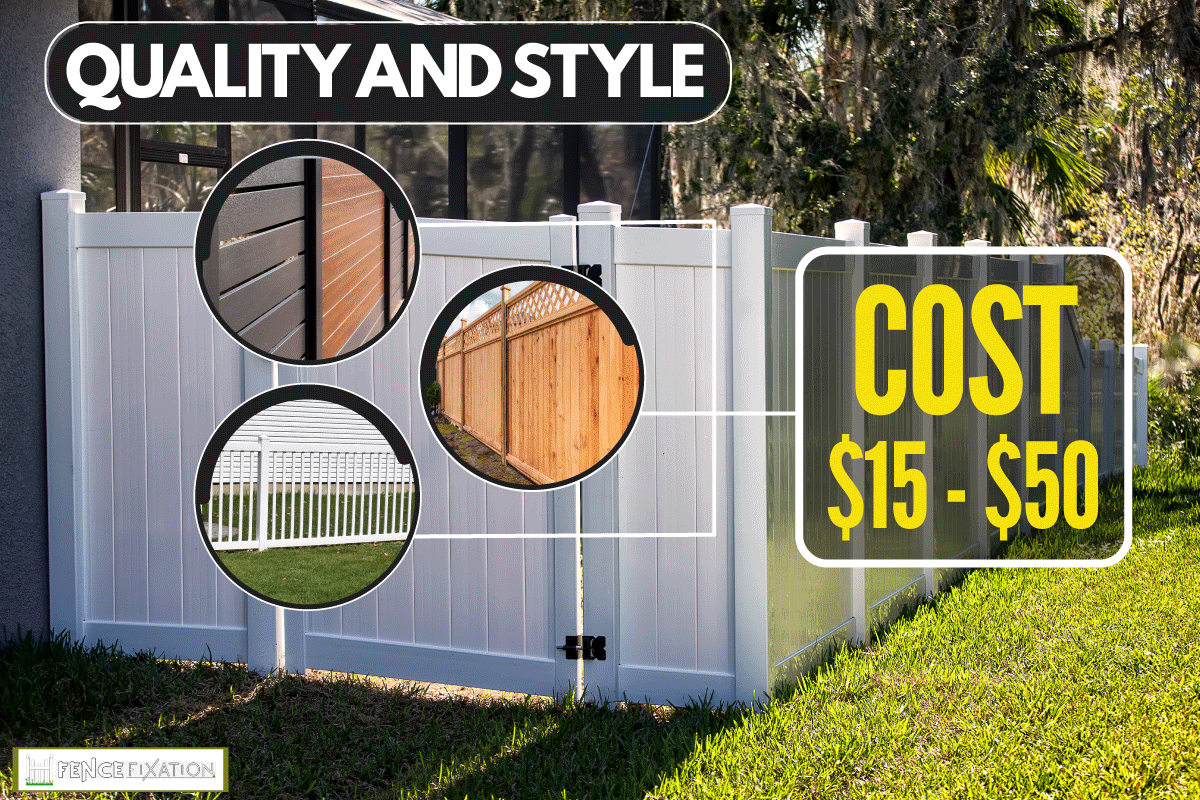
Vinyl: An Overview
Vinyl is one of the options when choosing a material best suited for your specific needs. What exactly is it made of and what are the advantages of its use?
Vinyl is a man-made material synthesized from ethylene and chlorine, which, when processed, combine to form a plastic-based compound known as polyvinyl chloride or PVC or simply vinyl. Chlorine is extracted from salt while crude oil is used to obtain ethylene.
Vinyl has been processed into a versatile component of various material applications such as in the construction industry where it is used in roofing, floors, plumbing, fencing, decking, and wire insulation, to mention a few.
Medical-related products that feature vinyl include intravenous and blood bags, gloves, goggles, caps, masks, mouthpieces, and valves. In the manufacture of automobiles, vinyl is a component of interior upholstery, mats, dashboards and armrests, body molds, wiring, and cables.
Since it is made from a specialized form of plastic, it resists moisture, rust, and parasites making it a strong and durable material, especially for fences.
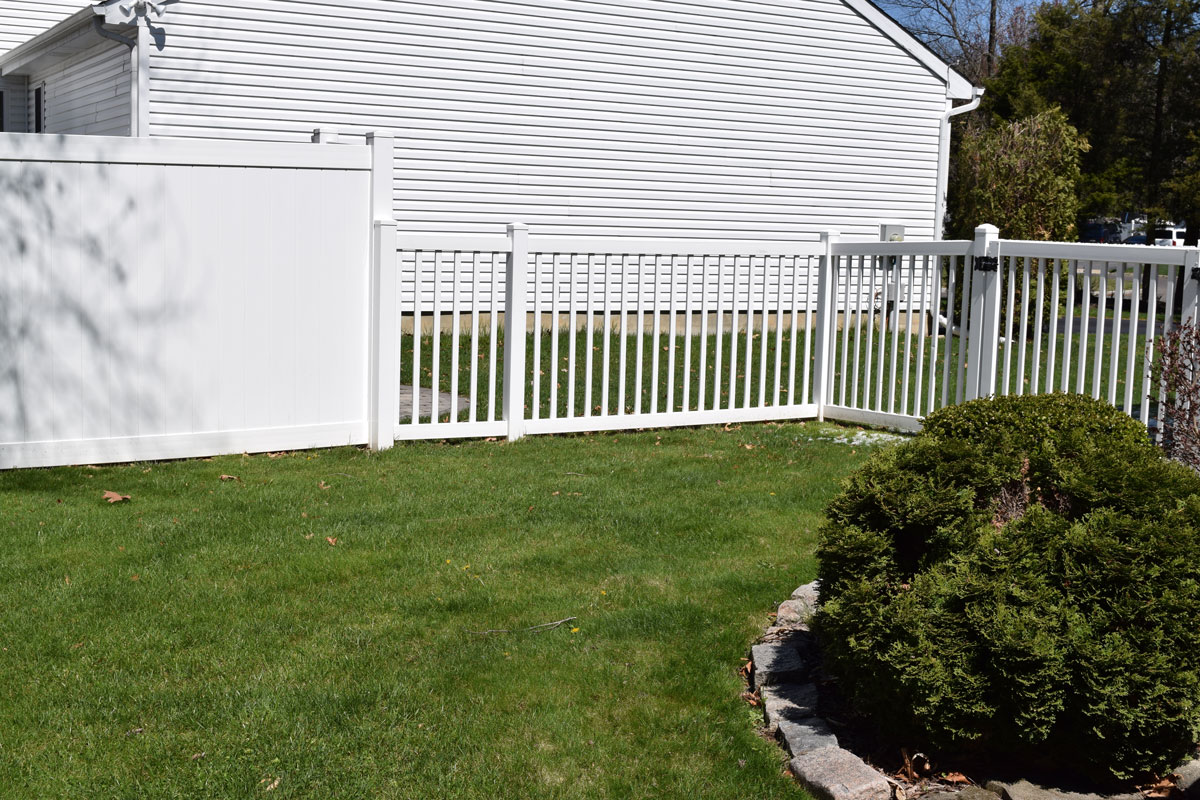
Pros Of Vinyl Fencing
Strength And Durability
Vinyl is a synthetically manufactured material that combines naturally available products to create a long-lasting structure. The main components of vinyl, chlorine and ethylene, undergo a series of procedures during the manufacturing process that binds them into a strong and resilient compound.
The best quality or top-of-the-line vinyl fences last a lifetime.
Resistant To Elements
Due to its structure, plastic-based materials such as vinyl are not susceptible to corrosion or water damage.
Unlike wood that rots and metal that rusts, vinyl can withstand extreme temperatures, harsh weather, and environmental organisms. It does not warp, expand or shrink and can maintain its structural form for decades.
Versatility Of Design

You can choose from a variety of designs and finish like natural wood, solid steel-like appearance, or simply the plain but elegant white that most vinyl fences feature. Since the fence specifications can be customized, you could opt for good privacy or a stylish more open enclosure.
Environment-Friendly
The raw materials in the manufacture of vinyl consist of salt which is a renewable natural substance and crude oil which accounts for less than half of the components. Compared to other materials, vinyl requires less energy to produce and lower emissions are released into the environment.
Scrap or used vinyl is recycled into different products and no residual waste contributes to plastic pollution.
Low Maintenance
The surface finish of vinyl is durable and permanent so it requires no repainting over time. All this fencing material needs is occasional cleaning preferably with pressurized water.
The material is designed so that dirt, grime and debris do not embed and come off easily. Vinyl is warp and scratch-resistant so no repair maintenance is necessary.
Easy Installation
Prefabricated vinyl fence parts come with easy assembly, they simply snap and interlock in place. No drilling, fastening, or welding is needed. Depending on the terrain of your property, additional labor may be necessary with the fence footing or foundation.
Cons of Vinyl Fencing
Replacement Not Repair
One setback regarding the structure of vinyl is that it cannot withstand strong impact. Grazing it with your car or being hit by a baseball, for instance, will cause the fence to break.
Since it cannot be repaired like wood or metal fences, you may have to replace the entire section resulting in a more expensive than necessary replacement.
Mildew Formation
Unlike pressure-treated wood, vinyl fences tend to attract mildew, especially in humid and shaded portions of your property. But since the material is non-porous, it may prove easy to remove. If untended, however, it makes the fence look splotchy and weathered.
Permanent Look
Once you choose the color of your fence, it becomes a permanent look unless you replace the whole structure. With wooden fences, you can opt to change the appearance from time to time by painting or using stains.
Cost of Vinyl Fencing
Vinyl fences have an average price range of $15 to $40 per linear foot. The overall installation ranges between $2,238 to $5,483 - labor costs, permits, and materials are included.
Generally, vinyl privacy fence panels are considered to be the most expensive since they have the largest dimensions and specifications. The cost per linear foot is between $25 to $60.
Wood Fencing
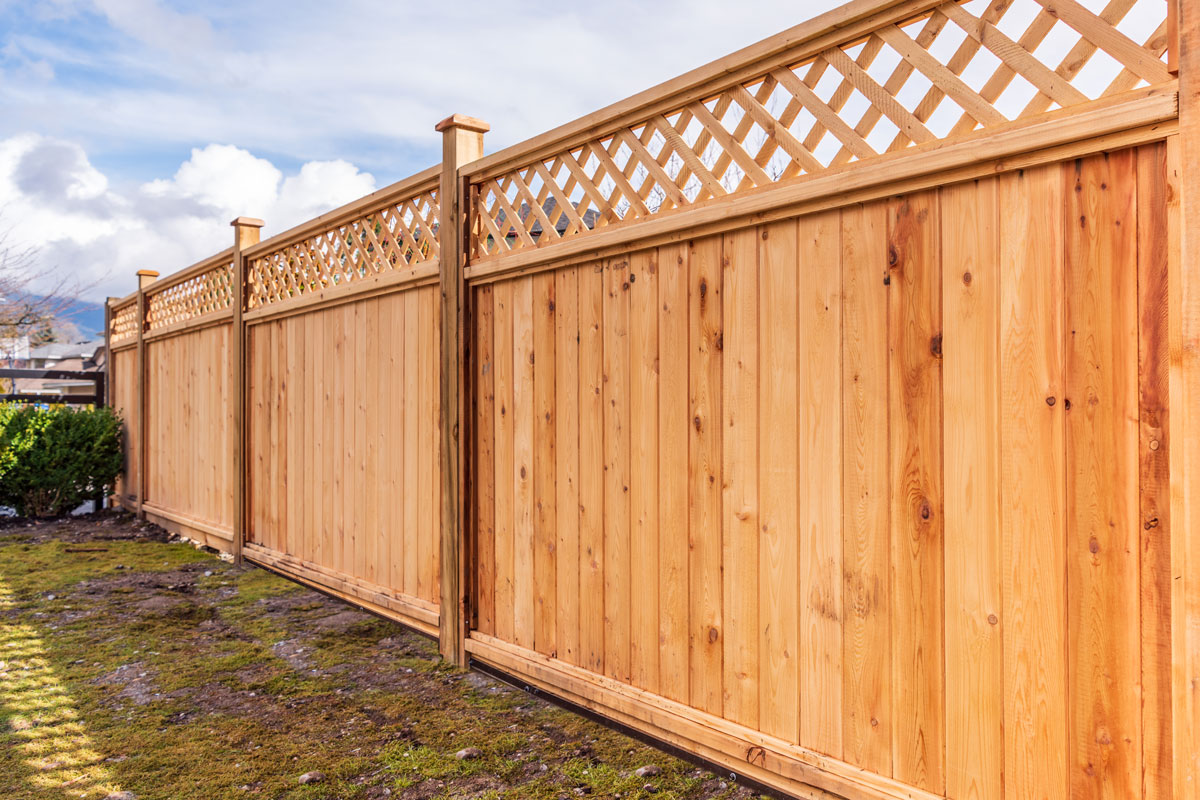
Many people choose wood as a fencing material because of its versatility and aesthetic appearance. It proves to be less costly than metal and vinyl, however, it may not last long compared to other fencing panelings, especially if not maintained properly.
Although this is the case, there are simple ways to keep lumber beautiful and durable for years to come.
Advantages And Disadvantages
Susceptibility To The Elements
Wood is prone to rot or decay, particularly when it has prolonged exposure to the elements. Excess moisture and high or low humidity levels will cause this material to shrink and expand.
It may seem insignificant but these changes have a considerable effect on your fence because it will bend or curve, affecting the durability of your enclosure in the long run.
Strength And Durability
It is important to use pressure-treated wood because it is not susceptible to lumber shrinkage. All the moisture content in the wood is removed and preservatives are added to prolong its lifespan. You can also use sealants to ensure it will not rot or get infested.
Overall Appearance
As we mentioned earlier, wood has a distinct classy effect if used on any kind of structure - fences included. Its striking natural appearance and wide selection of panelings and design add to its visual appeal.
Cost And Maintenance
The cost depends on the kind of wood you intend to use. Expenses range from $12 to $27 per linear foot - this includes work and materials. On average, the overall cost of a 6 feet fence is about $2,755.
However, the total expenditures vary based on the type, materials, and lumber specifications.
The species of lumber and the kind of fence mainly contribute to the overall expense.
- Pressure-treated pine is the least expensive because it costs $3 to $7 per linear foot.
- Cedar costs between $4 to $8 per linear foot.
- Redwood ranges from $4 to $7 per linear foot.
Are Vinyl Fences More Expensive Than Wood?
Wood as a fencing material is relatively less expensive than vinyl, however, it proves to be costly in the long run because it needs regular maintenance throughout the years.
Aluminum Fencing
Aluminum is a lightweight material made from the element aluminum.
It is widely available in a variety of preformed styles and designs, easier to clean and maintain, and can resist weathering. Because of this, aluminum fencing is a more cost-effective choice than steel and wrought iron.
What Are The Pros And Cons Of Aluminum Fencing?
Susceptibility To The Elements
Because aluminum is a non-ferrous material or it does not contain iron, it is not prone to rust or corrosion. It can withstand moist or damp conditions unlike wood and any other metal which will decay and corrode when exposed to the elements for longer periods.
Strength And Durability
One quality homeowners love about aluminum is that it is more durable than wood and can last for 50-plus years without the need for too much maintenance. This fencing material may not be the strongest, nonetheless, it is not prone to dirt, grime, molds, and mildew which is why it has a longer lifespan.
While an aluminum fence may not rot or decay, it has the tendency to bend. A hard impact will surely leave dents, leading to a costly replacement.
Cost
The overall cost mainly depends on product specifications, dimensions, and your preferred aluminum finish. Expenses range from $13 to $75 per linear foot. On average, people spend $4,250 for the installation.
Some aluminum fencing material is sold in panels that have different rates and prices. Pool and powder-coated fences are less expensive while picket and ornamental panelings are costlier.
Are Vinyl Fences More Expensive Than Aluminum?
In most cases, vinyl can be less and more expensive than aluminum. It mainly depends on product specifications such as height, length, style, and finish.
Chain Link Fencing
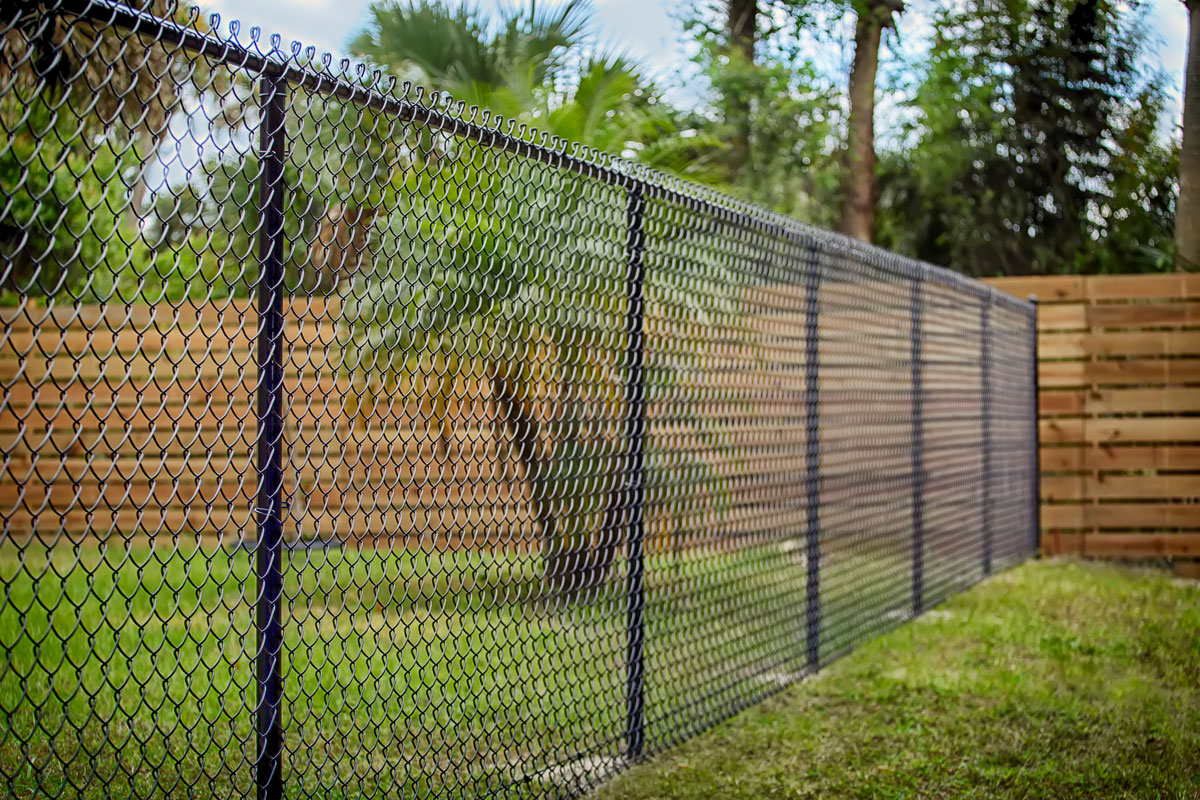
Chain link fences are made of either steel or aluminum. It is a popular choice among homeowners because of its versatility, cost, low maintenance requirements, and easy installation. It is however not as visually appealing as wood and vinyl.
The strength of chain-link enclosures mainly depends on the wire mesh, size, and coating. This fencing structure can last between 25 to 35 years.
Cost And Maintenance
Chain link fences cost $9 to $30 per linear foot. Average installation expenses range from $1,350 to $3,900. The numbers vary depending on the specifications of your chain-link enclosures. A 4-foot-tall fence costs $450 to $1,300 while a 6-foot tall has a price range of $500 to $1,400.
In general, vinyl is more expensive than chain-link enclosures when it comes to the initial cost.
In Closing
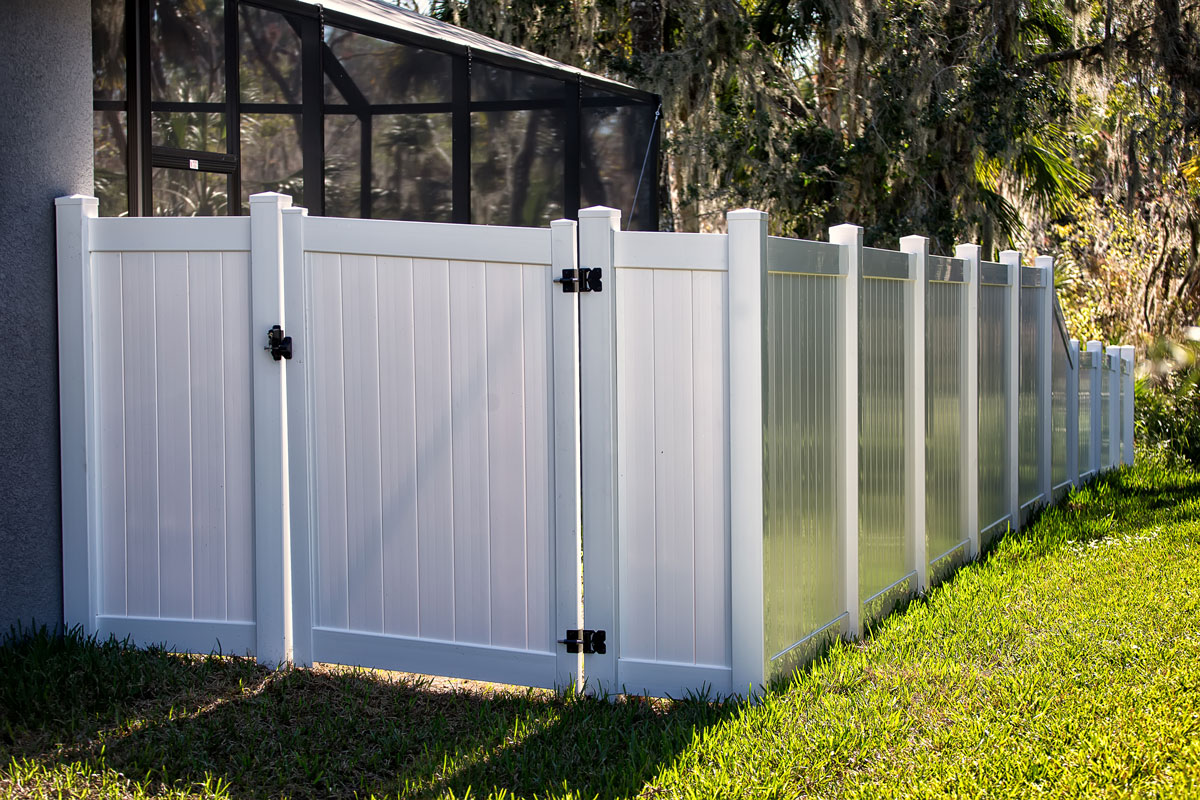
Although vinyl is resistant to decay, corrosion, and any other fencing-related problems, it proves to be the most expensive when it comes to installation. However, its durability makes it cost-effective in the long run. We hope you have found this article helpful and informative.

![A modern middle class home with its backyard being enclosed for privacy by a new, modern style white vinyl fence. Green grass, and blue sky is in the background., Can Vinyl Fencing Withstand Wind? [Plus 7 Windproofing Tips!]](https://fencefixation.com/wp-content/uploads/2022/06/A-modern-middle-class-home-with-its-backyard-being-enclosed-for-privacy-by-a-new-modern-style-white-vinyl-fence.-Green-grass-and-blue-sky-is-in-the-background-600x400.jpg)
![A white vinyl fence running across a yard on spring day with blue sky and trees in the background, Can Vinyl Fence Touch The Ground? [Plus Tips On How To Close The Gap]](https://fencefixation.com/wp-content/uploads/2022/06/A-white-vinyl-fence-running-across-a-yard-on-spring-day-with-blue-sky-and-trees-in-the-background-600x400.jpg)
